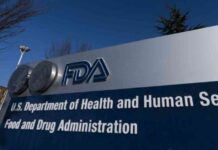Patients battling fentanyl addiction may find hope in a recent study that suggests higher doses of buprenorphine could reduce hospitalization rates and improve treatment retention. The study, published in JAMA Network Open, challenges current federal guidelines that recommend a target dose of 16 mg for buprenorphine treatment. As fentanyl continues to pose a significant threat in the U.S. drug supply, addiction treatment providers have reported that patients may require higher doses of buprenorphine to effectively combat their illicit opioid use.
Contrary to initial expectations, the study found that patients receiving 24 mg or more of buprenorphine were less likely to visit the emergency room or require inpatient care compared to those receiving lower doses. Sarah Axeen, the lead author of the study and director of data and analytics at the USC Schaeffer Center for Health Policy and Economics, noted that the research aimed to investigate potential harmful outcomes associated with higher doses but instead revealed a beneficial impact on patient outcomes.
Buprenorphine and methadone are considered the “gold standard” medications for treating opioid use disorder, with buprenorphine commonly known by the brand name Suboxone. However, as the potency of the drug supply increases, patients seeking care face challenges transitioning from fentanyl to addiction medications like buprenorphine. Buprenorphine, an opioid that binds to the brain’s opioid receptors differently than pain medications or fentanyl, can induce “precipitated withdrawal” if not administered correctly, leading to symptoms such as pain, anxiety, sweating, and gastrointestinal distress.
In response to the evolving landscape of addiction treatment, healthcare providers have explored innovative approaches to initiating patients on buprenorphine, including utilizing larger “loading” doses, “microdosing,” and combining the medication with small amounts of ketamine. The emerging evidence supporting the safety and efficacy of higher buprenorphine doses underscores the importance of providing clinicians with flexibility in determining medically appropriate dosages for their patients.
Despite the growing body of research supporting higher buprenorphine doses, access to these doses remains a challenge due to stigma surrounding addiction medications and regulatory barriers. Many healthcare providers are hesitant to prescribe buprenorphine, and those who do often encounter obstacles such as prior authorization requirements from insurers and adherence to FDA recommendations limiting dosages to 16 or 24 mg. This restrictive approach to dosing can hinder patients’ treatment outcomes and perpetuate the cycle of addiction.
Dr. Edwin Chapman, a seasoned addiction medicine practitioner, emphasized the detrimental impact of inadequate dosing on patient success, highlighting instances where insurance restrictions prevented patients from receiving the necessary dose adjustments. Recognizing the therapeutic benefits of higher buprenorphine doses in managing fentanyl addiction, Dr. Chapman advocated for policy changes to align with emerging evidence and support clinicians in tailoring treatment plans based on individual patient needs.
The discussion surrounding buprenorphine dosing has garnered attention from federal agencies, with initiatives like the Substance Abuse and Mental Health Services Administration’s listening session aiming to evaluate the adequacy of current dosing guidelines. Insights from healthcare professionals, including a Canadian doctor who emphasized the safety profile of higher buprenorphine doses, have contributed to the ongoing dialogue regarding the need for flexibility in prescribing practices to optimize patient outcomes.
As the landscape of addiction treatment evolves, the push for revising dosing guidelines to reflect current evidence and clinical practice remains crucial. The reluctance of insurance companies and states to deviate from outdated FDA recommendations underscores the urgency of updating policy frameworks to align with advancements in addiction medicine. By prioritizing patient-centered care and empowering clinicians to leverage higher buprenorphine doses when appropriate, healthcare systems can enhance the effectiveness of addiction treatment and support individuals in their journey towards recovery.

















